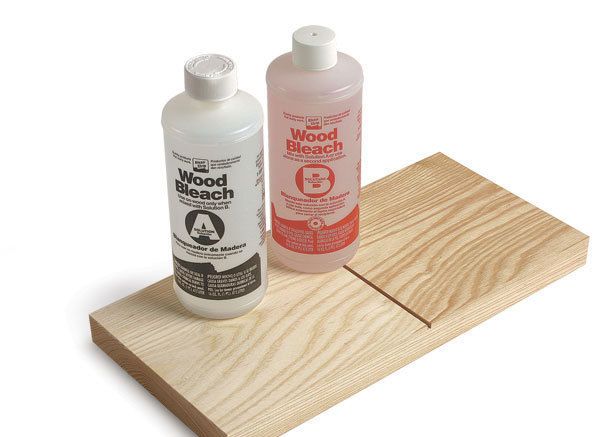Creative Bleaching Techniques
Stain-removing tool is key to unlocking new and old looks
Synopsis: Most woodworkers turn to bleach to get rid of unwanted stains but often overlook the medium’s creative potential. Jeff Jewitt gives step-by-step directions to create pickled effects, get a neutral base for pastel shades or replicate aged-wood colors.
Most woodworkers associate bleach with getting rid of stains, whether they occur naturally in wood or were caused by contact with iron or when the wrong dye was applied. But there is a creative side to bleaching wood: You can achieve new looks by removing a wood’s natural color; you can produce a neutral base for gray, pickled, and other finishes; and you can match the color in older furniture.
Use a special two-part wood bleach
There are several products sold as wood bleach, but for this technique you will need a two-part bleach also known as A/B bleach. Check your local paint or hardware store, or order it online. This product is sold as a package of two bottles; part A is sodium hydroxide and part B is hydrogen peroxide.
Sodium hydroxide is particularly dangerous. You must wear eye protection because a healthy splash in your eyes may cause permanent blindness, and wear long sleeves and thick (preferably nitrile) gloves to protect your skin from chemical burns.
Mix and apply the bleach—Because bleaching will raise the grain, don’t bother to pre-sand beyond P180-grit. Some brands of bleach instruct you to apply first part A and then part B. The brand I used, made by Klean-Strip, said to mix the two parts together in equal amounts in a nonmetallic container. Mix only what you will use; the mixture weakens after three or four hours.
Apply the bleach evenly with a disposable foam or nylon-bristle brush. The bleach may foam a bit when the wood is wet, a sign that it’s working. The results may start to be visible in 10 to 15 minutes, but let the wood dry at least six hours to judge the full effects. If the wood isn’t pale enough, try a second application. But be cautious; more than two coats will raise the grain severely and may produce a greenish cast.
Neutralize the bleach, and sand—Particularly after a second application, wait at least two hours and then neutralize the reaction with a mixture of white vinegar and water. Follow the instructions for the exact ratio.
Let the wood dry for 24 hours out of direct sunlight, then sand with P180- or P220-grit sandpaper, being careful not to sand through to the unbleached wood.
From Fine Woodworking #185
For the full article, download the PDF below:
Fine Woodworking Recommended Products



Foam Brushes





















Log in or create an account to post a comment.
Sign up Log in